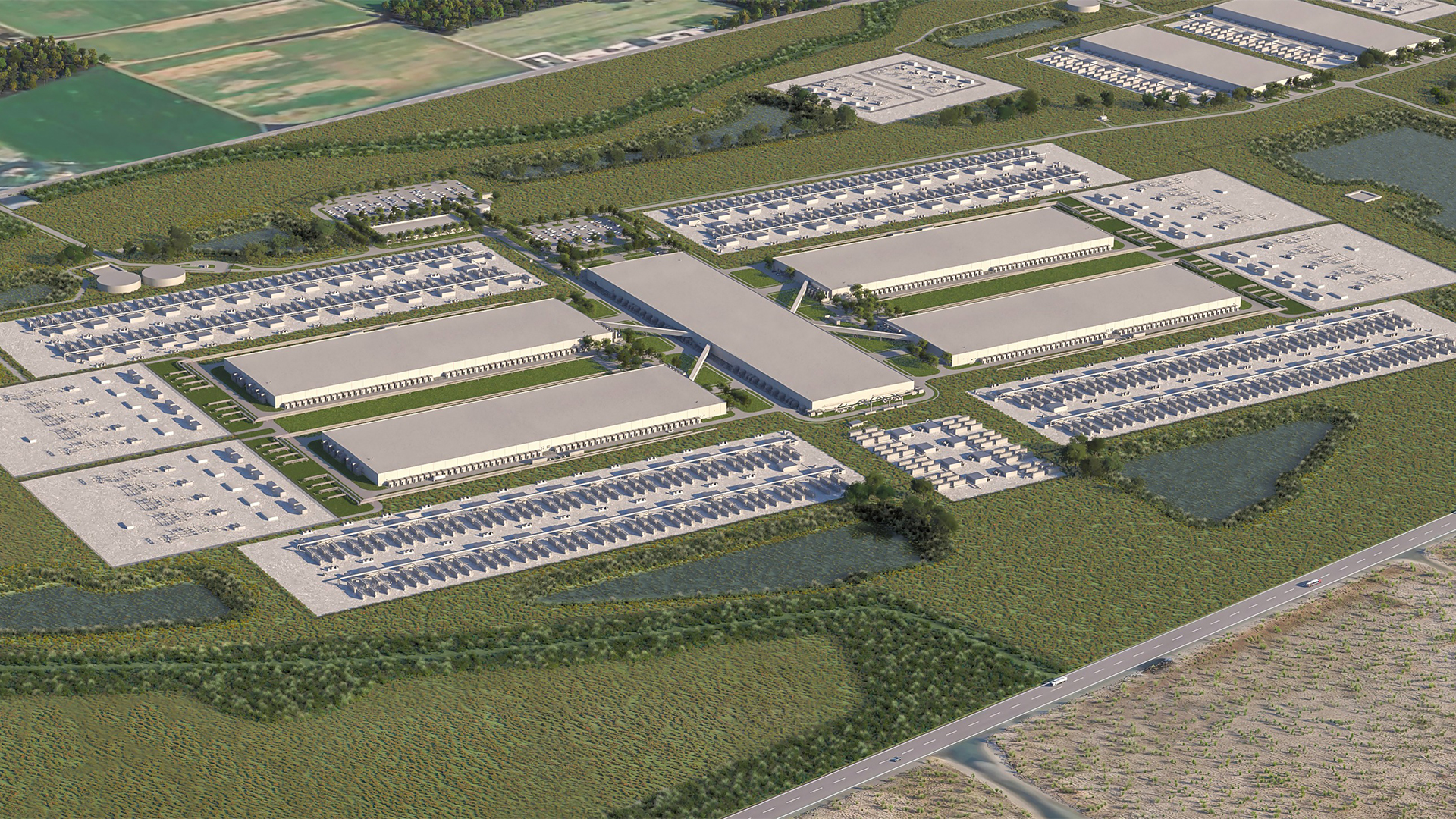Inside Google’s plan to use data center waste heat to warm nearby homes and businesses
Google said waste heat will be reused as part of $1 billion investment to support AI growth


Google plans to use the waste heat from one of its data centers to warm nearby homes and businesses as part of a $1 billion investment.
The tech giant is extending its data center operations in Hamina in the south of Finland, to support the growth of its artificial intelligence initiatives in Europe, and will work with the city-owned energy provider Haminan Energia on the project.
As part of the move, the tech giant said waste heat from the site will be re-routed and provided free of charge to the district heating network in nearby Hamina which covers local households, schools, and public service buildings.
“We will be recovering heat at the Google Hamina data center, which operates today with carbon-free energy at 97%,” said Google’s global head of infrastructure and sustainability Ben Townsend.
“This means the recovered heat will also be 97% carbon free. It will represent 80% of the annual heat demand of the local district heating network according to Haminan Energia.”
Until now, the heat from Google’s Hamina data center has been used to heat the offices and buildings on site. From next year, the heat coming from the data center will be recovered to optimize the district’s heating network energy efficiency and reduce its carbon emissions footprint.
The move forms part of Google’s aim to achieve net zero emissions across all of its operations and value chain by 2030. The tech giant said it wants to run all offices and data centers on carbon-free energy by the end of the decade.
Get the ITPro daily newsletter
Sign up today and you will receive a free copy of our Future Focus 2025 report - the leading guidance on AI, cybersecurity and other IT challenges as per 700+ senior executives
“This project helps bring us closer to achieving this goal while also supporting Finland’s long-standing commitment to environmental sustainability and technological innovation,” the company said.
According to Business Finland, since 2009, Google has invested €3.5 billion in its Hamina data center and related infrastructure. It said the new investment will support around 1,900 direct, 1,650 indirect and 640 construction jobs per year in the next two years.
The whole campus currently employs around 400 people in roles ranging from computer technicians to electrical and mechanical engineers and facilities management; the campus expansion will add another 100 full-time jobs.
The project is expected to start contributing to Hamina’s heating needs by late 2025, in a region currently highly dependent on fossil fuel. While heating nearby housing doesn’t reduce the carbon footprint of the data center itself, it can offset other energy use like this.
The vast racks of whirring servers in a data center create a lot of heat, which is a problem for the operators of these facilities. The heat has to be removed otherwise the servers could fail, but simply venting is wasteful and environmentally unfriendly.
Data centers are getting bigger and there are more of them, thanks to the increased use of cloud computing, and demand is also being fueled by the rise of generative AI which requires vast processing power.
In the UK, the National Grid recently predicted that the power use of data centers would increase six-fold in the next decade. And as the power demand of data centers grows, tech companies are keen to show how they can reduce the impact of these installations, either by increasing their use of renewable energy and finding uses for the heat by-product.
The European Commission’s best practice guidelines for data center energy efficiency suggest operators should look at reusing heat.
Google isn’t alone in reusing data center waste heat
There are already a number of projects in the pipeline and up-and-running to reuse data center heat to warm buildings.
RELATED WHITEPAPER

Waste heat from Facebook’s Odense data center has been warming the Danish city for a number of years now. Heat from the servers is sent over copper coils filled with water, which when warmed is used in a heat pump facility to create hot water for the district heating network.
The University of Edinburgh is also trialing a new system to store waste heat from its Advanced Computing Facility in disused mine workings and then use it to heat thousands of households.
Similarly, in London the government recently awarded £36 million to a project to harness waste heat from several data centers in the west of the city to create a district power network to heat thousands of homes by 2040.
Heating homes isn’t the only option for waste energy, however. One project underway in France aims to use the waste heat to warm tanks growing algae which could be used to manufacture food supplements or other products.
Steve Ranger is an award-winning reporter and editor who writes about technology and business. Previously he was the editorial director at ZDNET and the editor of silicon.com.
-
 Enterprises face delicate balancing act with data center sustainability goals
Enterprises face delicate balancing act with data center sustainability goalsNews High energy consumption, raw material requirements, and physical space constraints are holding back data center sustainability efforts, according to new research from Seagate.
By Emma Woollacott
-
 Cleo attack victim list grows as Hertz confirms customer data stolen
Cleo attack victim list grows as Hertz confirms customer data stolenNews Hertz has confirmed it suffered a data breach as a result of the Cleo zero-day vulnerability in late 2024, with the car rental giant warning that customer data was stolen.
By Ross Kelly
-
 Google shakes off tariff concerns to push on with $75 billion AI spending plans – but analysts warn rising infrastructure costs will send cloud prices sky high
Google shakes off tariff concerns to push on with $75 billion AI spending plans – but analysts warn rising infrastructure costs will send cloud prices sky highNews Google CEO Sundar Pichai has confirmed the company will still spend $75 billion on building out data centers despite economic concerns in the wake of US tariffs.
By Nicole Kobie
-
 Meta is building the world’s longest subsea cable: Project Waterworth will span 50,000 km and connect five continents – and it aims to boost global connectivity and AI services
Meta is building the world’s longest subsea cable: Project Waterworth will span 50,000 km and connect five continents – and it aims to boost global connectivity and AI servicesNews Meta has announced plans to build the world's longest subsea cable in a bid to supercharge global connectivity and drive AI innovation.
By Emma Woollacott
-
 Ireland has become a “data dumping ground” for big tech
Ireland has become a “data dumping ground” for big techThe sharp increase in data center projects may be threatening Ireland's net-zero aspirations
By Nicole Kobie
-
 Meta wants to join the big tech nuclear club
Meta wants to join the big tech nuclear clubNews Meta has become the latest big tech company to explore the use of nuclear energy to power data centers.
By Nicole Kobie
-
 Meta just unveiled plans to spend $10 billion on its largest-ever data center
Meta just unveiled plans to spend $10 billion on its largest-ever data centerNews The Louisiana facility will be optimized for AI workloads
By Emma Woollacott
-
 Data centers will be critical to UK economic growth in the coming decade – but researchers have warned of a ‘data doomsday’ unless energy infrastructure is improved
Data centers will be critical to UK economic growth in the coming decade – but researchers have warned of a ‘data doomsday’ unless energy infrastructure is improvedNews With TechUK calling for improved grid connections and easier access to renewable energy, a new study warns that the world's entire electricity supply may not be enough
By Emma Woollacott
-
 Europe needs more energy and better grids to meet data center power demands in the age of AI
Europe needs more energy and better grids to meet data center power demands in the age of AINews Data center energy demands in Europe are set to triple by the end of the decade, and that means countries will need to boost investment in sustainable power sources and upgrade grid infrastructure.
By Nicole Kobie
-
 Data center water consumption is spiraling out of control
Data center water consumption is spiraling out of controlNews Energy usage might be front of mind amid the AI era, but surging data center water consumption is raising serious concerns among industry stakeholders
By Solomon Klappholz